Tourist Attractions In Rwanda: Referred to as the “land of a thousand hills,” Rwanda offers exceptional experiences in one of the world’s most spectacular nations thanks to its breathtaking landscape and hospitable, friendly populace. It is endowed with remarkable biodiversity and amazing species that coexists with its wide plains, highland rainforest, and volcanoes.
Tourist Attractions In Rwanda
Kigali Genocide Memorial Center:
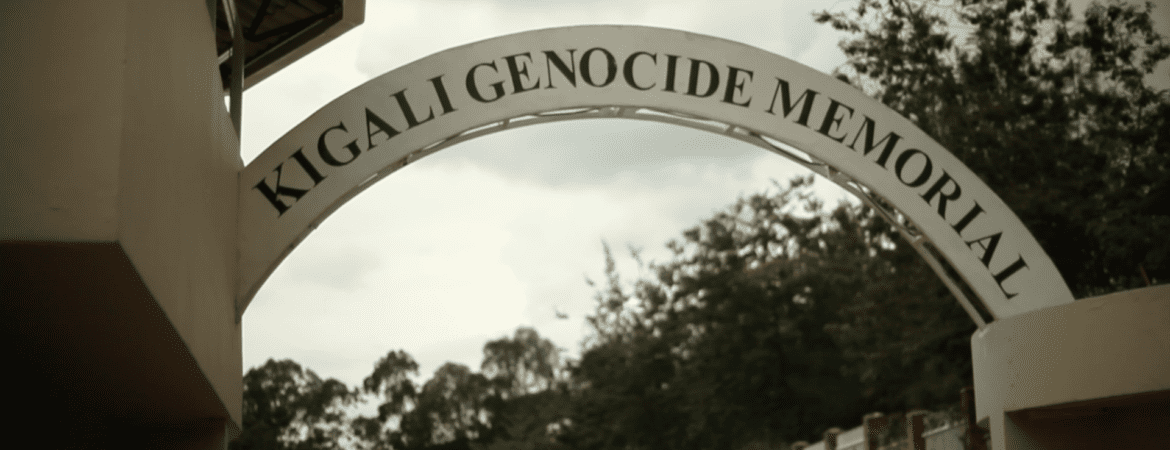 You should probably visit the Genocide Memorial Center in the Rwandan capital, Kigali, before venturing out to one of the country’s well-known national parks. About 250,000 persons who were ruthlessly slaughtered by the Interahamwe (Hutu extremists) are represented by their remains in the museum. The center is divided into three sections: one for adults who perished in the genocide, one for children died during the genocide, and a third section for teaching about genocides that took place around the world.
You should probably visit the Genocide Memorial Center in the Rwandan capital, Kigali, before venturing out to one of the country’s well-known national parks. About 250,000 persons who were ruthlessly slaughtered by the Interahamwe (Hutu extremists) are represented by their remains in the museum. The center is divided into three sections: one for adults who perished in the genocide, one for children died during the genocide, and a third section for teaching about genocides that took place around the world.
While at the site, you will learn a lot about what transpired before, during and after the 1994 genocide. You can watch short videos about the tragic event or listen to what the resident Guides have to say. The experience can be emotional but the main purpose of the displays is to teach people (especially the young generation) about the horrors of genocides so that it never happens anywhere else again.
State House Museum:
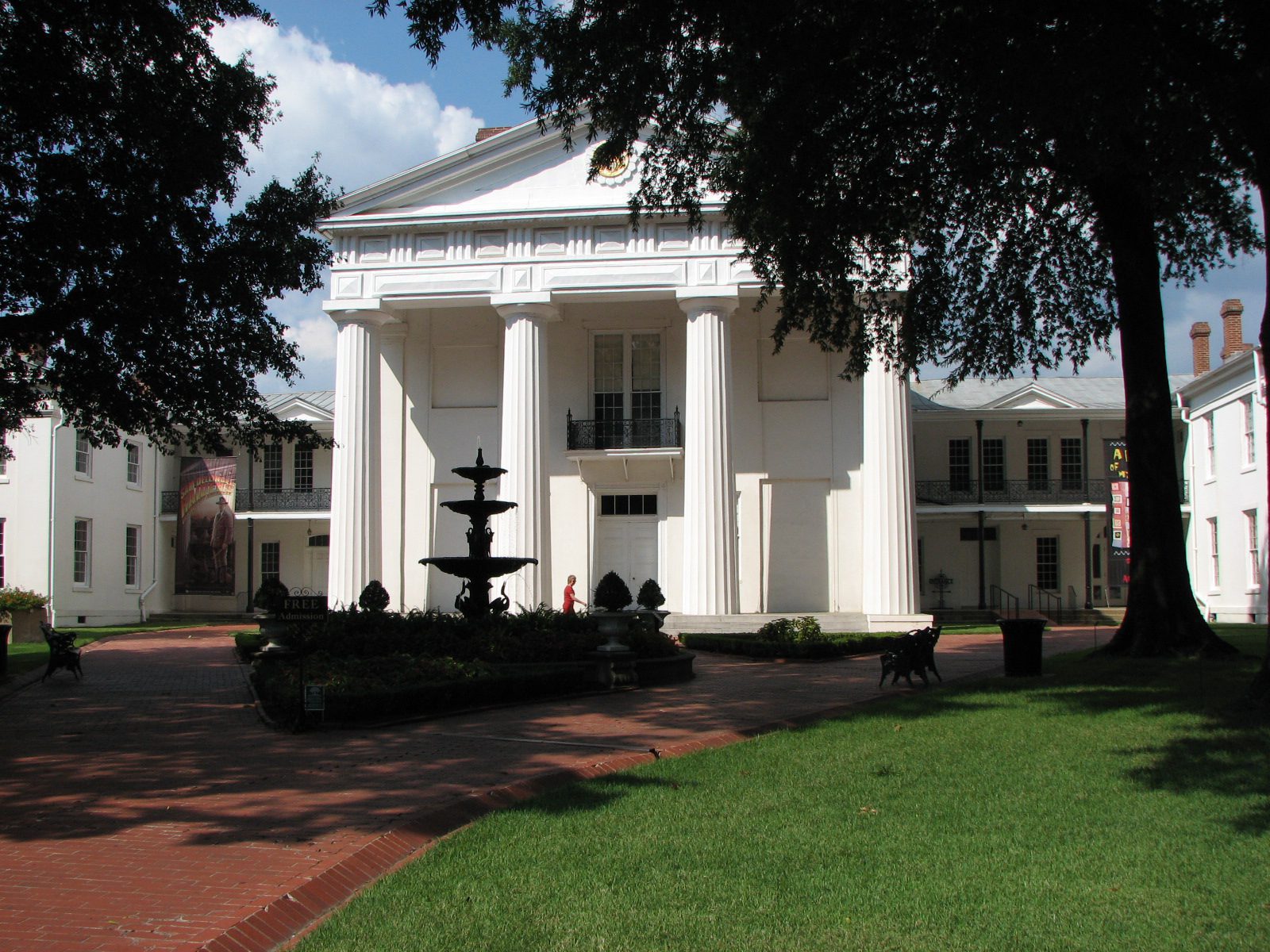 The former presidential residence is now the State House Museum. Its most recent leader was Habyarimana. After being shot at, Habyarimana’s plane crashed inside the royal grounds. A genocide that was already planned was started when the presidential plan was shot down. Visitors can now tour the palace to learn more about the genocide’s precursors and the president Habyarimana’s lifestyle there. The plane’s debris is still visible inside the complex.
The former presidential residence is now the State House Museum. Its most recent leader was Habyarimana. After being shot at, Habyarimana’s plane crashed inside the royal grounds. A genocide that was already planned was started when the presidential plan was shot down. Visitors can now tour the palace to learn more about the genocide’s precursors and the president Habyarimana’s lifestyle there. The plane’s debris is still visible inside the complex.
Local Dance Performances:
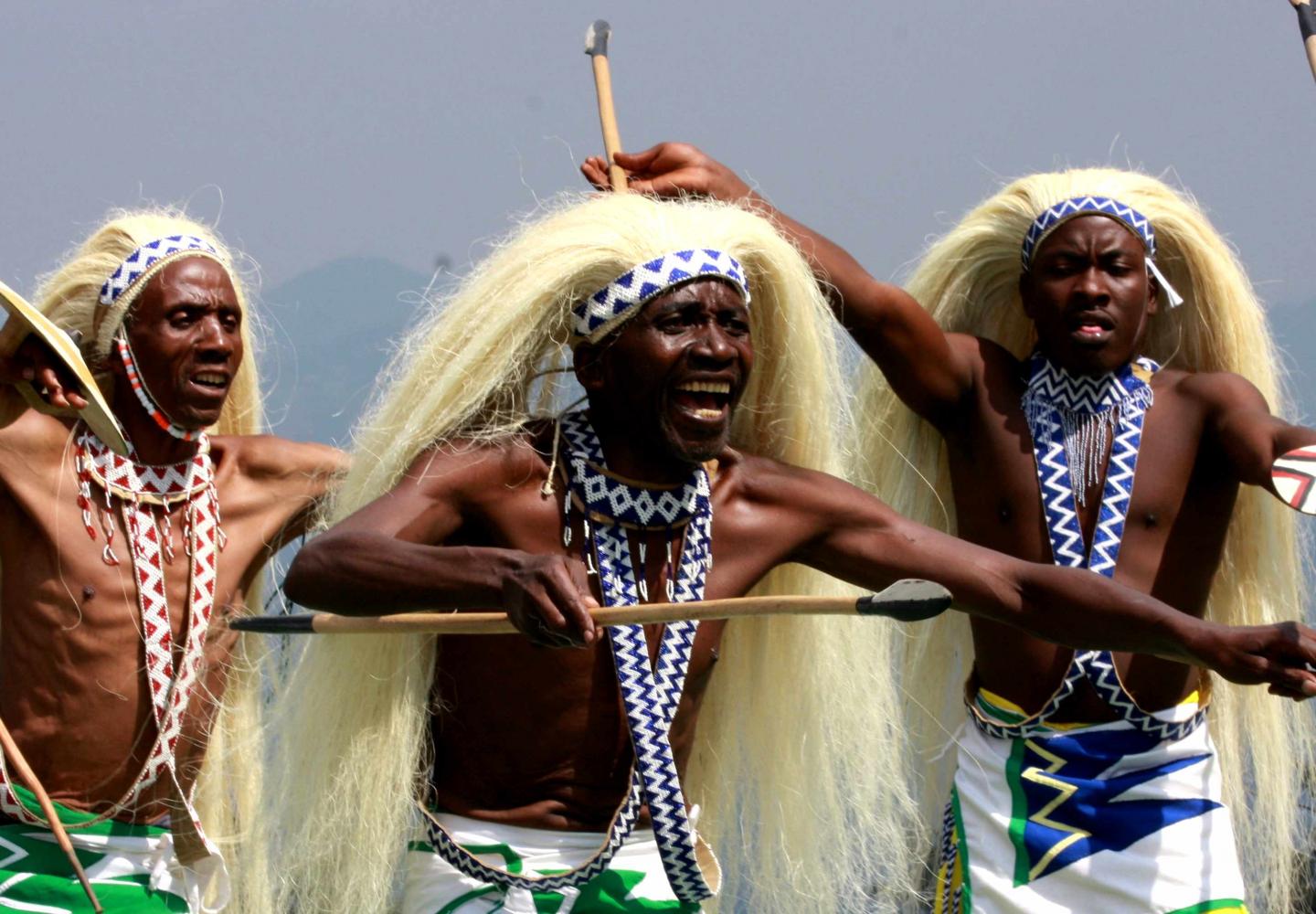
Viewing a performance by an Intore Dance Troupe is one of the simplest ways to comprehend the culture and traditions of the people of Rwanda. Evening dance performances are arranged by all reputable hotels for patrons to enjoy while unwinding. The performer’s passion, vigor, and grace are indicators of the Intore Dance’s level of quality. Folk tales or other narratives pertaining to the Kinyarwanda culture may be interjected during the dance. The want to participate is always there for observers.
Rwanda Kimironko Market:
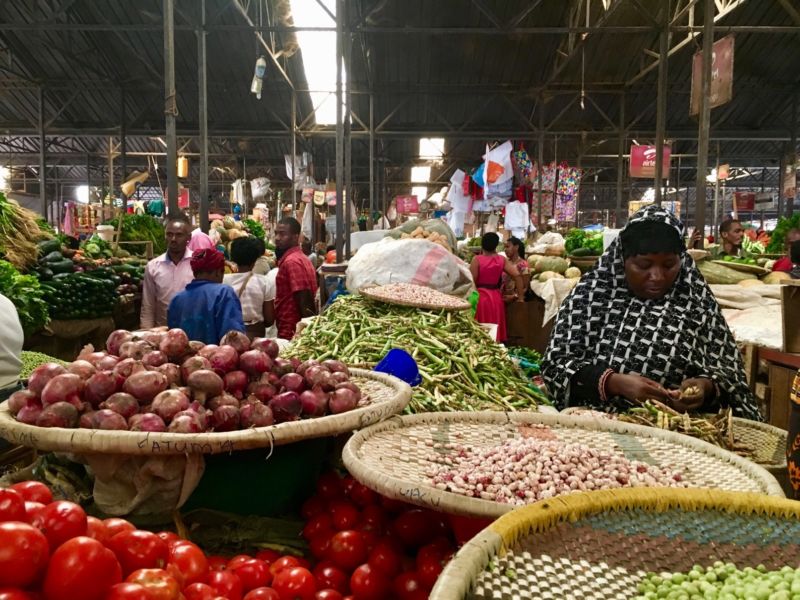 The main central market of a new location is a good place to start learning about the way of life there. Everyone shops in Kimironko Market for low-cost, fresh produce, meals, and fruits. There are many different items on sale. Customers just browse the many stalls and purchase what they need. An extension of the market focuses on high-quality pre-owned apparel, including suits, purses, shoes, and clothing. Kimironko is the place to go if you’re wondering where to find high-quality regional fabrics like Kitenge at a reasonable price.
The main central market of a new location is a good place to start learning about the way of life there. Everyone shops in Kimironko Market for low-cost, fresh produce, meals, and fruits. There are many different items on sale. Customers just browse the many stalls and purchase what they need. An extension of the market focuses on high-quality pre-owned apparel, including suits, purses, shoes, and clothing. Kimironko is the place to go if you’re wondering where to find high-quality regional fabrics like Kitenge at a reasonable price.
Inema Art Center:
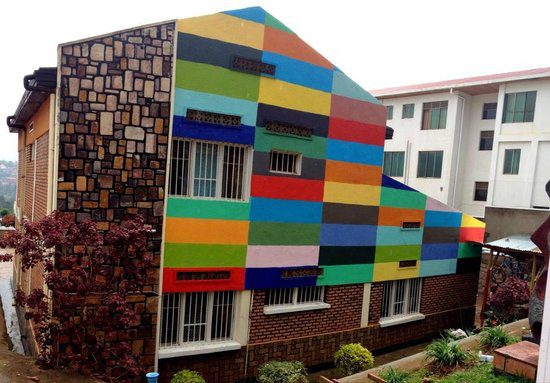 Two brothers founded this art center with the intention of fostering and promoting regional artists. The Center is home to some of the best modern artisan goods in the country of Rwanda. The best artists from the United States and abroad have exhibits on display.
Two brothers founded this art center with the intention of fostering and promoting regional artists. The Center is home to some of the best modern artisan goods in the country of Rwanda. The best artists from the United States and abroad have exhibits on display.
The organization arranges training sessions and workshops for aspiring artists, particularly those who are less fortunate orphans. During a normal visit, guests are given a tour of the building while they browse the many galleries for souvenirs. Additionally, there are dance performances from a local Intore cultural group.
Gorilla Trekking in the Volcanoes National Park:
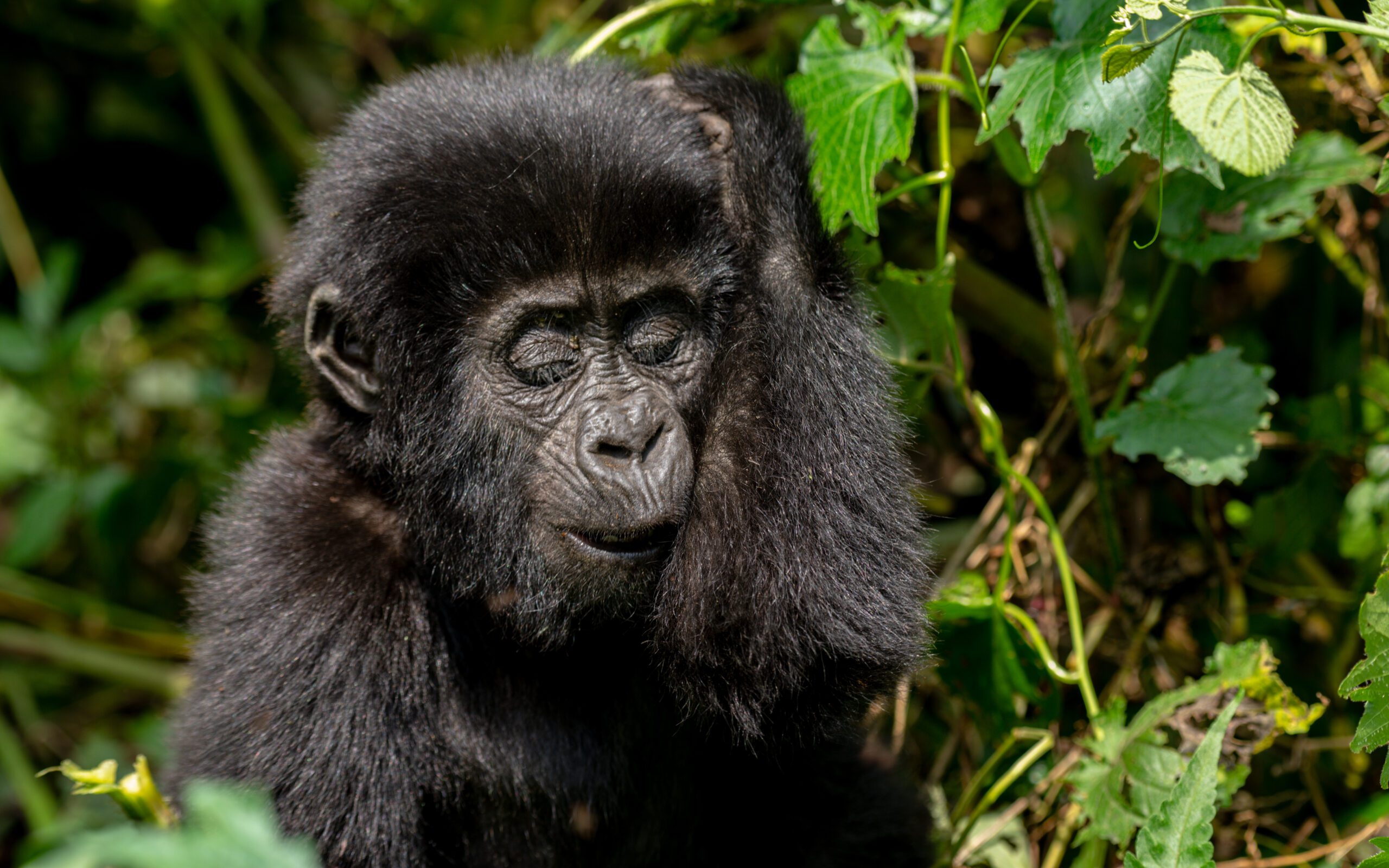 The most popular Rwandan location for animal protection is undoubtedly the Volcanoes National Park. Along with other well-liked activities, the park attracts thousands of international visitors every year to observe the mountain gorillas.
The most popular Rwandan location for animal protection is undoubtedly the Volcanoes National Park. Along with other well-liked activities, the park attracts thousands of international visitors every year to observe the mountain gorillas.
Only eight persons can track one of the 10 habituated gorilla groups in the park per day. In the company of armed Rangers, guests are then brought outside to track various gorilla populations.
One of the most remarkable experiences when traveling to Africa is going on a gorilla hike. Why? because it involves coming across an endangered species that resembles and acts like us. Rwanda charges $1500 per person for a gorilla permit.
Kigali Milk Bars:
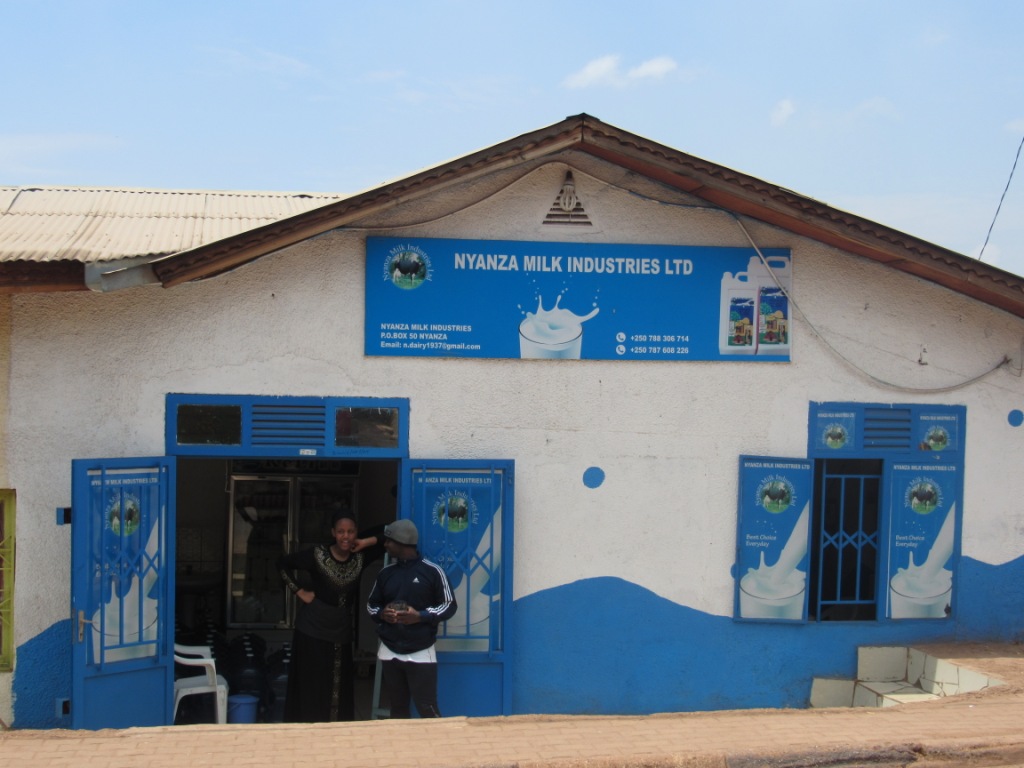 Cattle raising has a long tradition among the Banyarwanda. They have long-horned cattle that resemble those in Ankole, Uganda. In Rwanda, drinking fresh milk for breakfast is highly common, and some people even contend that it is the reason the country has so many attractive women. Everywhere across the nation there are milk bars.
Cattle raising has a long tradition among the Banyarwanda. They have long-horned cattle that resemble those in Ankole, Uganda. In Rwanda, drinking fresh milk for breakfast is highly common, and some people even contend that it is the reason the country has so many attractive women. Everywhere across the nation there are milk bars.
Cow farms in rural and suburban areas of cities supply the milk. For those who prefer their milk hot or fresh, Kigali Milk Bar is a great option.
The King’s Palace Museum in Nyanza town:
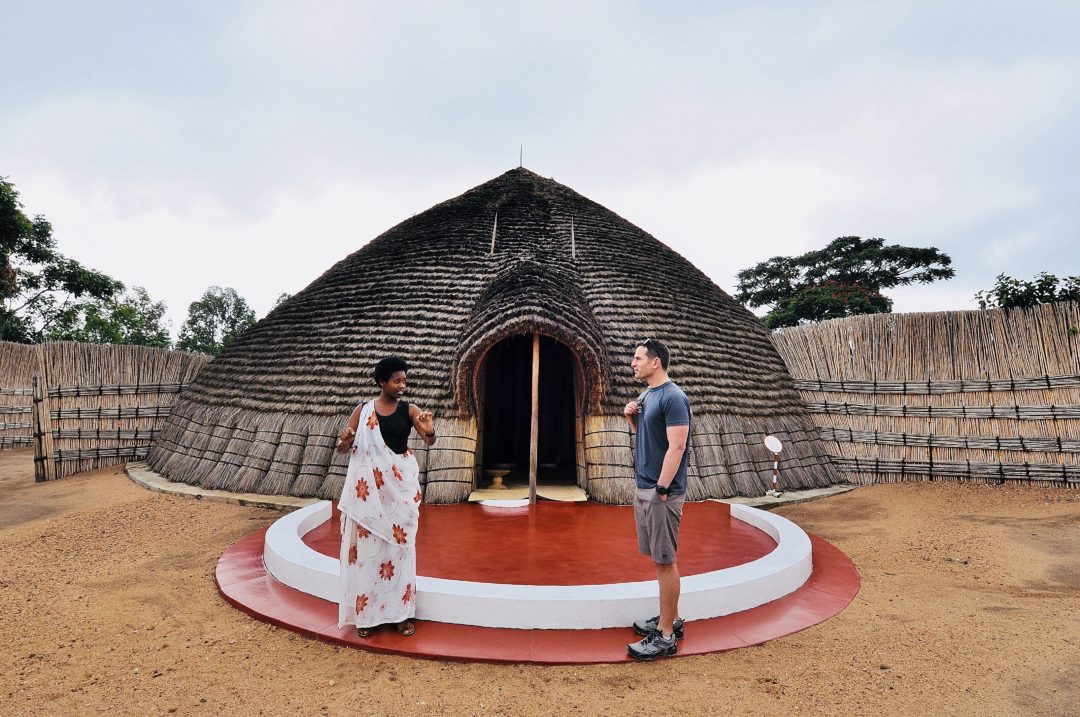 King Rudahigwa Mutara III and King Musinga Yuhi V were the last two kings to reign Rwanda in the past. The kingdoms were abolished as a result of Belgian colonizers. The Nyanza palace is presently all that is left. For visitors who are interested in learning about the history of the nation, this palace has been transformed into a museum. While King Rudahigwa Mutara III was in power, the palace was constructed with assistance from the Belgian government. Make sure to stop at the Museum if you are in the southern region of Rwanda or your route to Nyungwe National Park.
King Rudahigwa Mutara III and King Musinga Yuhi V were the last two kings to reign Rwanda in the past. The kingdoms were abolished as a result of Belgian colonizers. The Nyanza palace is presently all that is left. For visitors who are interested in learning about the history of the nation, this palace has been transformed into a museum. While King Rudahigwa Mutara III was in power, the palace was constructed with assistance from the Belgian government. Make sure to stop at the Museum if you are in the southern region of Rwanda or your route to Nyungwe National Park.
Mount Kigali:
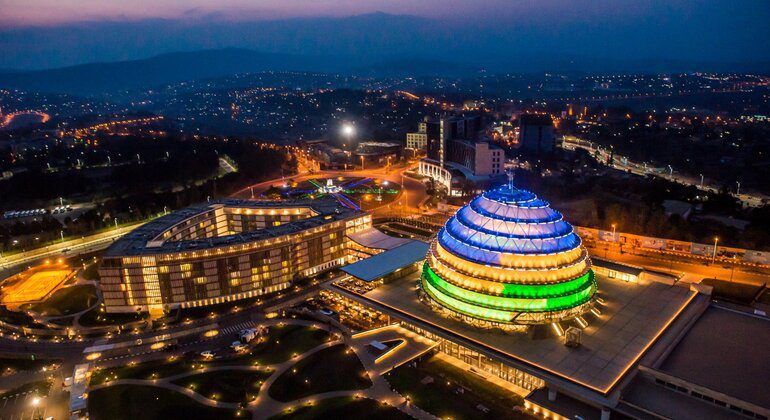 Do you want to know where to go for the top vantage points of Kigali? You only need to look at Mount Kigali. It is actually a notable hill with one of the highest points in the nation rather than a mountain. Amazing city views await you as you reach the hill’s summit. Beautiful vista is another perk of the trek to the hill’s summit. Visitors can check out recreational amenities, bars, and restaurants while atop Mount Kigali.
Do you want to know where to go for the top vantage points of Kigali? You only need to look at Mount Kigali. It is actually a notable hill with one of the highest points in the nation rather than a mountain. Amazing city views await you as you reach the hill’s summit. Beautiful vista is another perk of the trek to the hill’s summit. Visitors can check out recreational amenities, bars, and restaurants while atop Mount Kigali.
Hotel des Mille Collines:
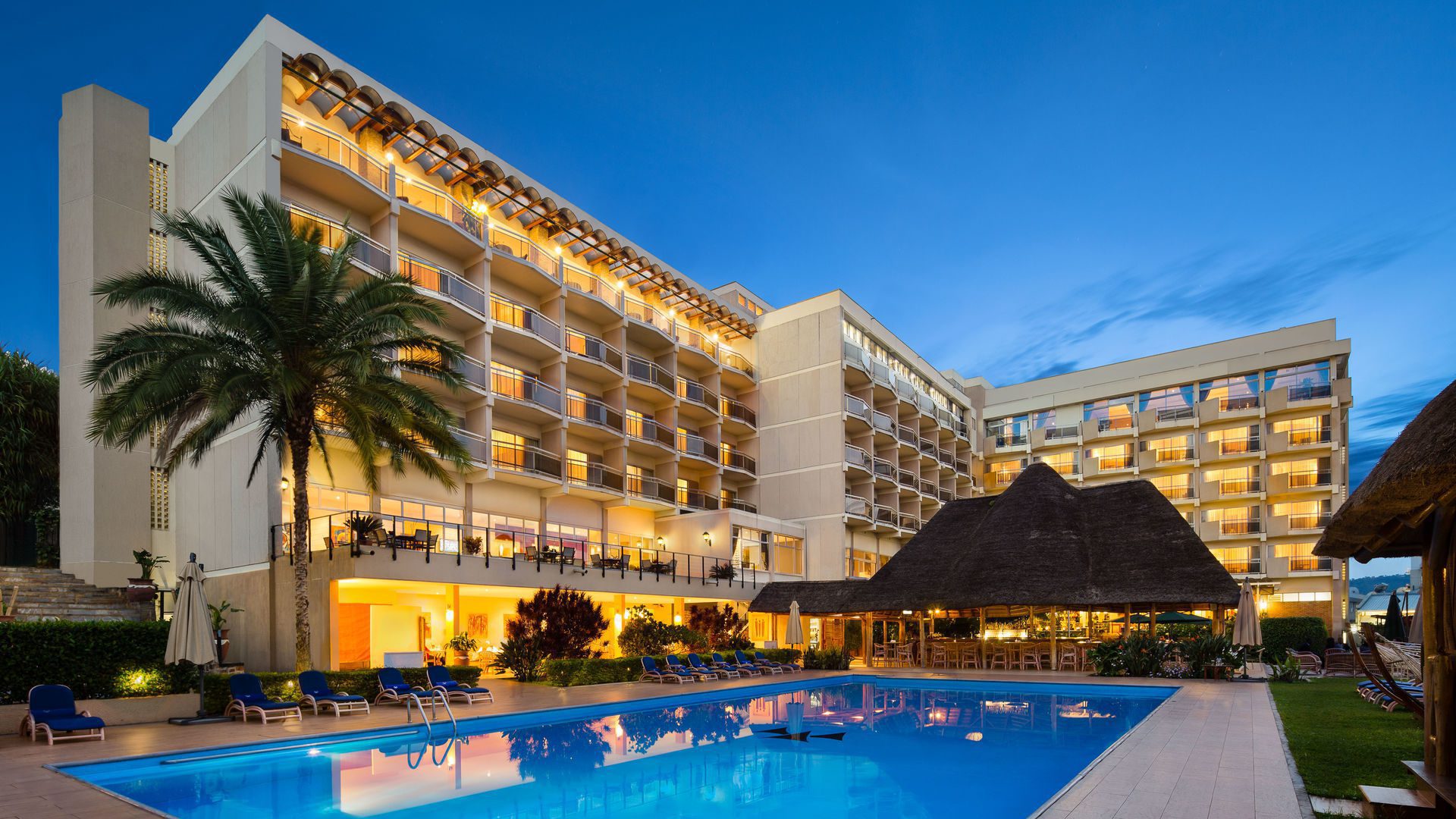 In 2004, the film “Hotel Rwanda” helped to popularize this 5-star hotel. The film is based on the actual account of a hotel manager who during the 1994 genocide concealed more than 1200 individuals in hotel rooms. As the hotel also served as a residence for diplomats, he was able to get away with it for a while.
In 2004, the film “Hotel Rwanda” helped to popularize this 5-star hotel. The film is based on the actual account of a hotel manager who during the 1994 genocide concealed more than 1200 individuals in hotel rooms. As the hotel also served as a residence for diplomats, he was able to get away with it for a while.
Both the high caliber of services provided and the hotel’s historical significance as a site of the genocide draw tourists to it. It contains a restaurant, fitness center, swimming pool, and 112 luxurious rooms, among other amenities. Consider yourself one of those who has been to Rwanda’s most renowned hotel by checking out the establishment.
Chimpanzee Trekking in Nyungwe National Park:
 One of Africa’s oldest afro-montane forests can be found in Rwanda’s Nyungwe forest. Thirteen different primate species, including chimpanzees, call this forest, which is located in the country’s south-western region, home. The Angola Colobus and Golden Monkeys still have a few refuges left in the Nyungwe forest.
One of Africa’s oldest afro-montane forests can be found in Rwanda’s Nyungwe forest. Thirteen different primate species, including chimpanzees, call this forest, which is located in the country’s south-western region, home. The Angola Colobus and Golden Monkeys still have a few refuges left in the Nyungwe forest.
Visitors have a selection of more than 15 nature walking pathways while exploring the woodland. If nature treks aren’t your style, you could try chimpanzee tracking in Nyungwe forest or the very well-liked canopy walk. Whatever activity you choose to sign up for, you will be rewarded with incredible sights of animals like birds (310 species), primates (13 species), butterflies (120 species), plants (over 1,000 species), frogs (32 species), and reptiles.
Canopy Walk in Nyungwe forest:
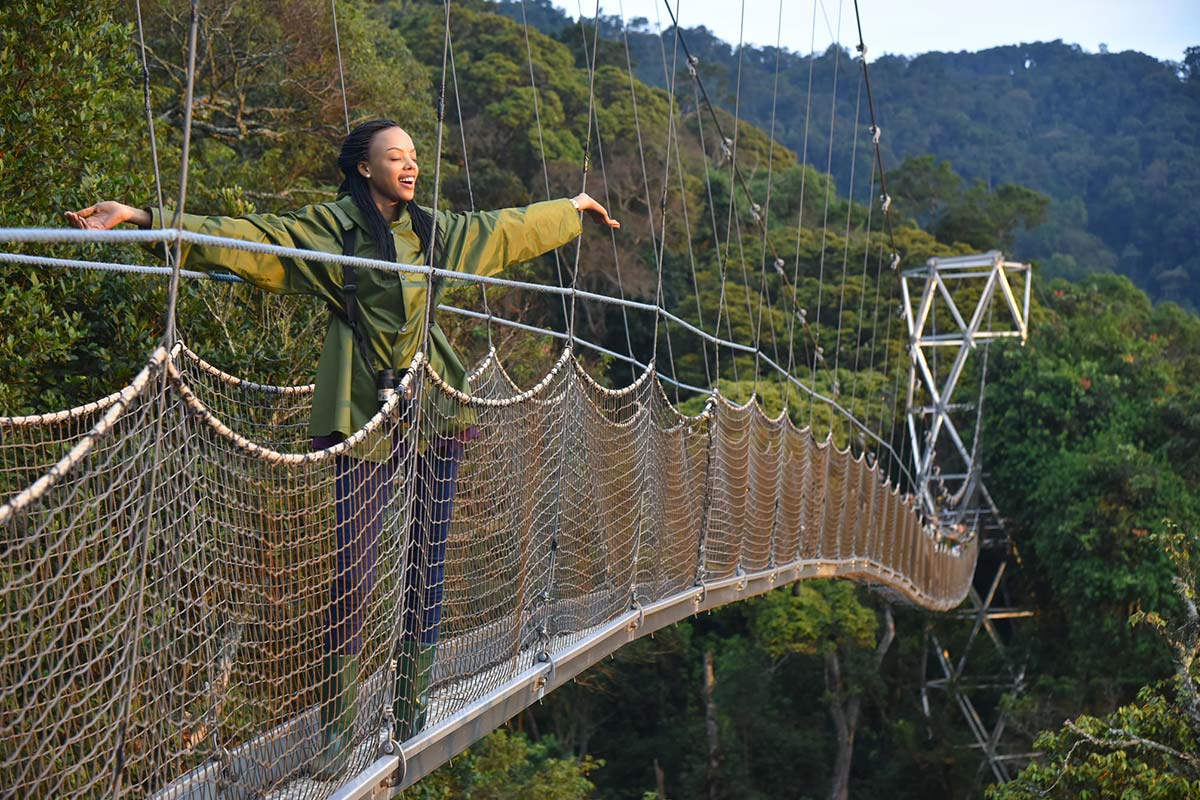 In addition to chimpanzee trekking and nature hikes, Rwanda’s Nyungwe Forest is home to one of the continent’s top canopy walk pathways. To diversify the nation’s tourism industry, the forest canopy walk was launched in 2010.
In addition to chimpanzee trekking and nature hikes, Rwanda’s Nyungwe Forest is home to one of the continent’s top canopy walk pathways. To diversify the nation’s tourism industry, the forest canopy walk was launched in 2010.
The canopy walkway is 50 meters high, providing a bird’s-eye perspective of the forest and its inhabitants. To complete the walk, which veers left and right as one advances from one place to another, takes some confidence. If you are scared of heights, you must be informed beforehand.
Kigali Convention Center:
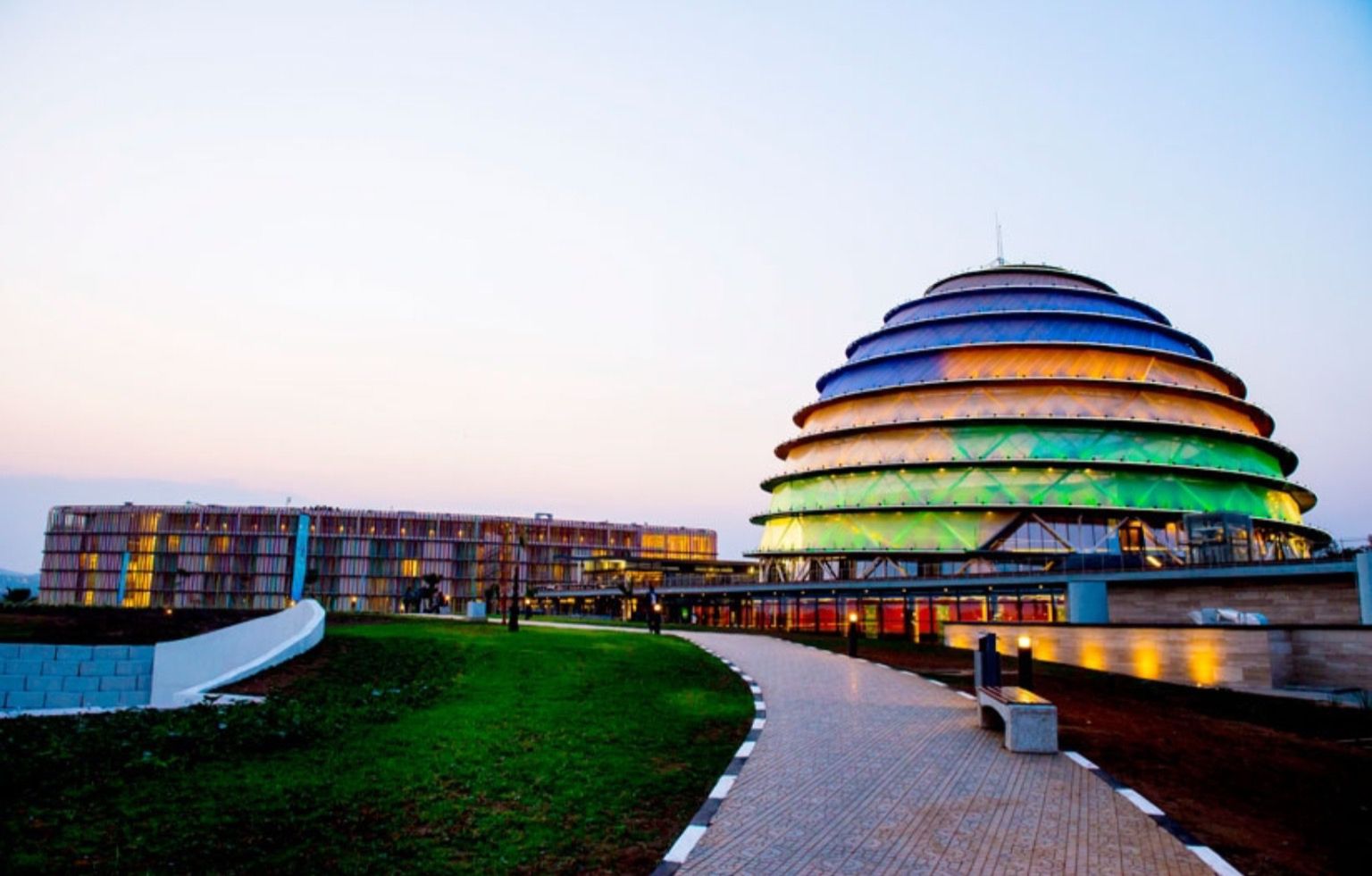 This Center is one of the most prominent buildings in Kigali. Its architecture is very impressive but what makes it well-known is that it is where most of the major conferences/meetings are held. Apart from the conference hall, the facility also has a 5-star hotel known as Radisson Blue and large shopping centers.
This Center is one of the most prominent buildings in Kigali. Its architecture is very impressive but what makes it well-known is that it is where most of the major conferences/meetings are held. Apart from the conference hall, the facility also has a 5-star hotel known as Radisson Blue and large shopping centers.
The Kigali Convention Center is excellent for photography, shopping or as a place to have lunch. The Center lights up during the night in a way that is second to no building in the country.
Golden Monkey Tracking:
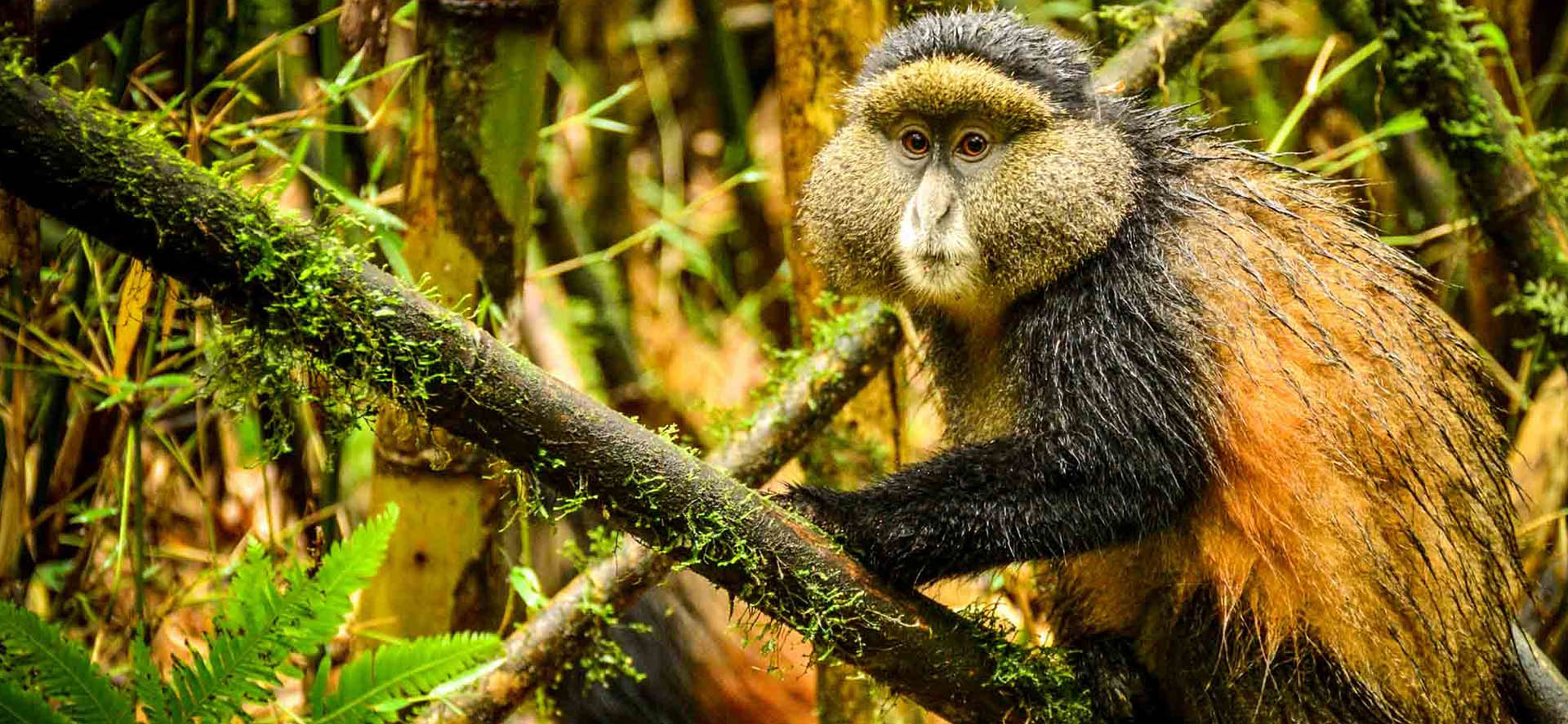 One of the last remaining populations of golden monkeys is in Rwanda. Both the Kahuzi Biega National Park in the Democratic Republic of the Congo and the Virunga highlands (Uganda, Rwanda, and Congo) are home to these stunning monkeys. Due to their extinction, golden monkeys are very protected.
One of the last remaining populations of golden monkeys is in Rwanda. Both the Kahuzi Biega National Park in the Democratic Republic of the Congo and the Virunga highlands (Uganda, Rwanda, and Congo) are home to these stunning monkeys. Due to their extinction, golden monkeys are very protected.
The biggest threat to them, despite the fact that eagles are their natural prey, is humans. Because of their gorgeous gold coats, fun personalities, and endangered status, tourists adore golden monkeys. A briefing is held to begin the search for golden monkeys in Rwanda at 7:30 am. Due to the fact that the monkeys don’t wander too far in the jungle, it is less taxing than going on a gorilla trip. In Rwanda, licences for golden monkeys cost $100.
Visiting the Tomb of Dian Fossey:
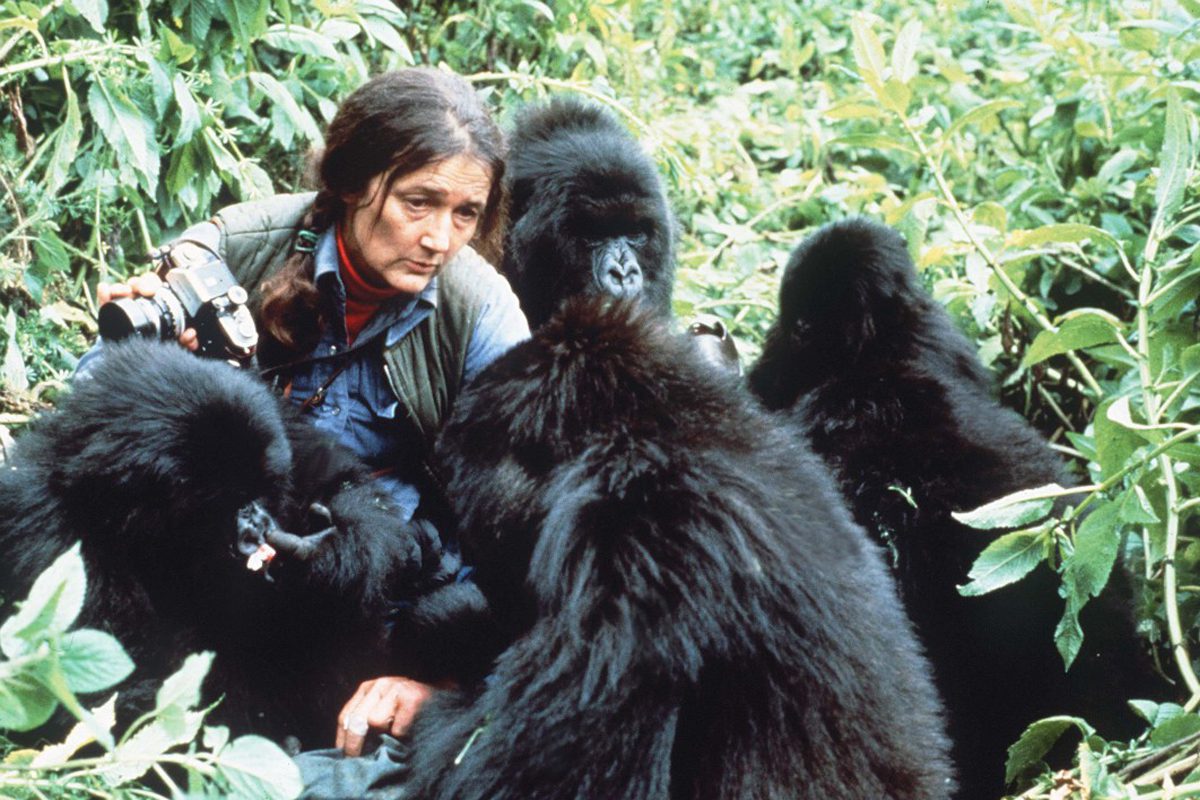 Dian Fossey is one of the greatest primatologists of the 20th Century. She was a pioneer in gorilla research and conservation with funding from the National Geographic.
Dian Fossey is one of the greatest primatologists of the 20th Century. She was a pioneer in gorilla research and conservation with funding from the National Geographic.
Fossey studied the behavior of mountain gorillas extensively for 18 years and discovered many things about them including how to habituate them. Without her findings, what we now know as gorilla trekking and habituation would not be possible.
As time went on, Fossey changed focus from research to gorilla conservation in order to protect the primates from extensive poaching. This won her many enemies leading to her death in 1985. Her killers have never been identified to this day.
After tracking gorillas, many choose to pay homage to her by visiting her former research center and tomb. Both sites are located on the slopes of mount Karisimbi and Bisoke. Getting to the tomb requires some level of fitness because it involve hiking up the mountains. You also need to prepare to deal with muddy trails especially during the wet season.
The Dian Fossey Hike permit costs $80 per person. One of the advantages of signing for the Dian Fossey hike is that you might get lucky and encounter one of the mountain gorilla groups along the trails. After visiting her tomb and former Karisoke Centre, you can also visit the new Karisoke Research Center found in the town of Musanze. This is where the Dian Fossey Gorilla Fund offices are also located and where her work continues.
Birdwatching:
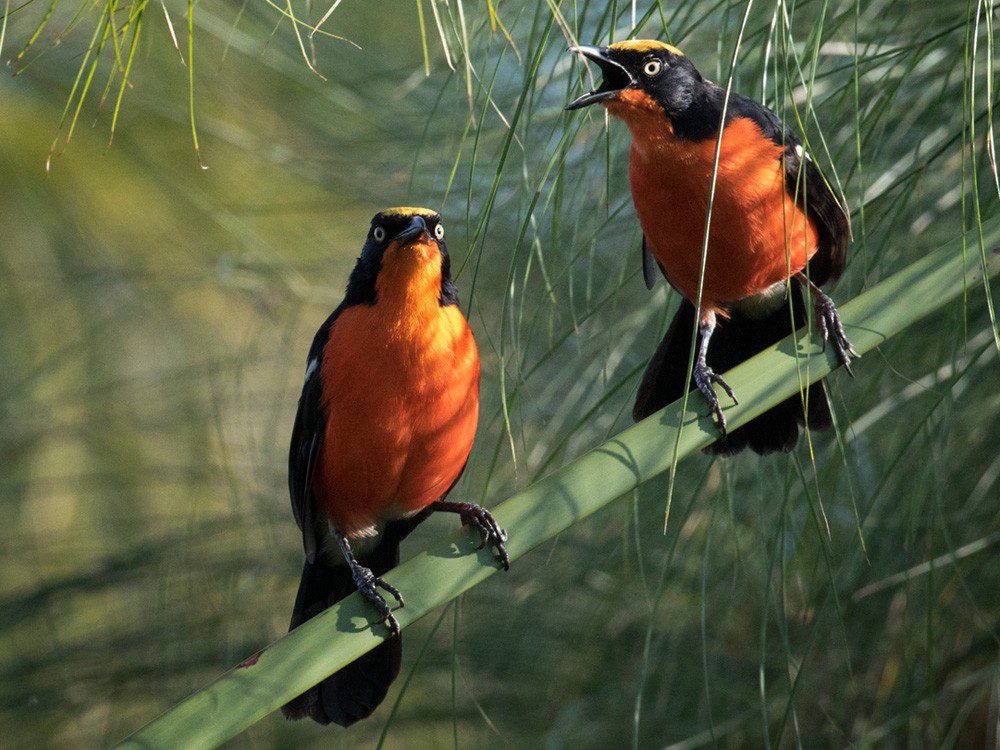 With over 640 bird species, 30 of which are native to Rwanda, the country makes for a great birding vacation. In Rwanda, birding excursions can be arranged at Akagera, Nyungwe, Volcanoes, and Lake Kivu National Parks. The suburbs of Kigali, as well as various smaller bodies of water, wetlands/swamps, marshes, and agricultural plantations, are additional places to go birding.
With over 640 bird species, 30 of which are native to Rwanda, the country makes for a great birding vacation. In Rwanda, birding excursions can be arranged at Akagera, Nyungwe, Volcanoes, and Lake Kivu National Parks. The suburbs of Kigali, as well as various smaller bodies of water, wetlands/swamps, marshes, and agricultural plantations, are additional places to go birding.
The important species to watch for are those that are exclusive to the Albertine Rift and the Virunga ranges. Akagera’s wetlands and marshes are another place to see the fascinating Shoebill stork.
Game drive in Akagera National Park:
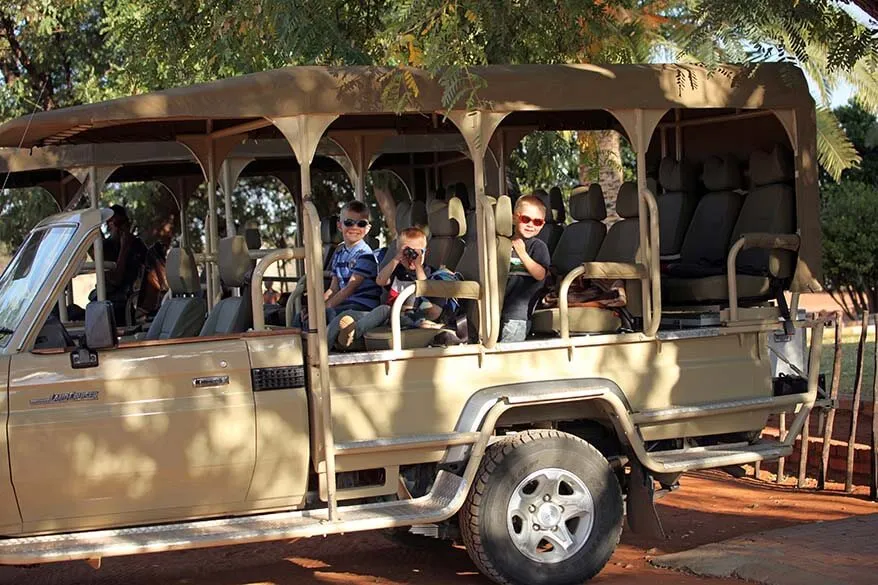 With all talk focused on mountain gorillas, it is easy to forget that Rwanda is also excellent for game drives and standard wildlife safaris. Akagera national park is Rwanda’s only savanna park covering an area of 1,085 square kilometers. It was established in 1934 but the park lost a significant number of wildlife during the 1994 genocide.
With all talk focused on mountain gorillas, it is easy to forget that Rwanda is also excellent for game drives and standard wildlife safaris. Akagera national park is Rwanda’s only savanna park covering an area of 1,085 square kilometers. It was established in 1934 but the park lost a significant number of wildlife during the 1994 genocide.
Thousands of fleeing citizens used the park as an escape route to seek safety in neighboring countries. When the genocide ended, many chose to settle in parts of the park leading to uncontrolled poaching and encroachments.
The number of animals rose and extinct species were reintroduced when the African Parks Network linked up with the government to manage the park. Swamps, savanna plains, woods, lakes, rivers, and terraced hills make up Akagera National Park. The Big 5 animals—lions, rhinos, elephants, buffaloes, and leopards—as well as other activities like gorilla trekking, chimpanzee tracking, cultural encounters, and mountain climbing—are now all found there, giving visitors the chance to go on a full Rwanda wildlife safari.
Olive baboons, blue monkeys, vervet monkeys, hyenas, leopards, and hippos are just a few of the other animals that may be seen at Akagera. Akagera is a great place for birding, natural hikes, and sport fishing in Lake Shakani in addition to regular game drives. Sunday afternoon
Helicopter Tour:
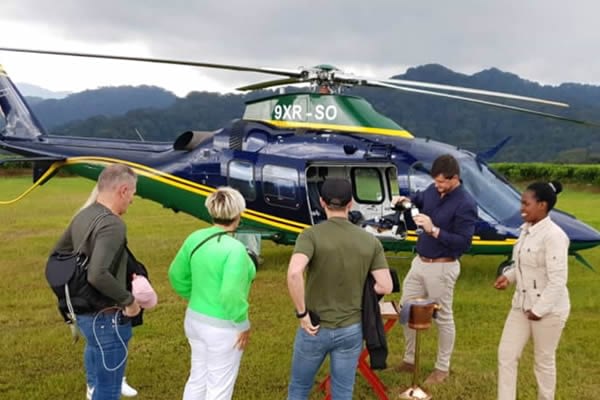 Helicopter tours in Kigali are arranged by Akagera aviation for those who want to get an aerial view of Kigali and the countryside. A helicopter tour can cost anywhere between $500 to $4500 depending on the specific route.
Helicopter tours in Kigali are arranged by Akagera aviation for those who want to get an aerial view of Kigali and the countryside. A helicopter tour can cost anywhere between $500 to $4500 depending on the specific route.
Regardless of which route you choose to take, expect to be rewarded with beautiful views of Rwanda’s hills and the majestic Virunga volcanoes. Helicopter tours can also be arranged all the way to Nyungwe National Park for amazing views of the vast forest and the vast Virunga ranges going all the way to the Democratic Republic of Congo. All flights start and end in Kigali.
Gishwati-Mukura National Park:
![]() The newest national park in Rwanda is Gishwat-Mukura. It was created by combining the Gishwati and Mukura forests. The park is a prime example of Rwanda’s conservation efforts and is located near to Lake Kivu. Refugees encroached on forested area both during and after the genocide, causing extensive deforestation and soil degradation.
The newest national park in Rwanda is Gishwat-Mukura. It was created by combining the Gishwati and Mukura forests. The park is a prime example of Rwanda’s conservation efforts and is located near to Lake Kivu. Refugees encroached on forested area both during and after the genocide, causing extensive deforestation and soil degradation.
The entire terrain has been revitalized by the government, with assistance from partners like the World Bank, by replanting trees and resettling locals who had encroached on the forest. Visitors to the park can go on nature hikes, see birds, and search for primates like chimpanzees or L’Hoest’s monkeys.
Visit Coffee and Tea Plantations:
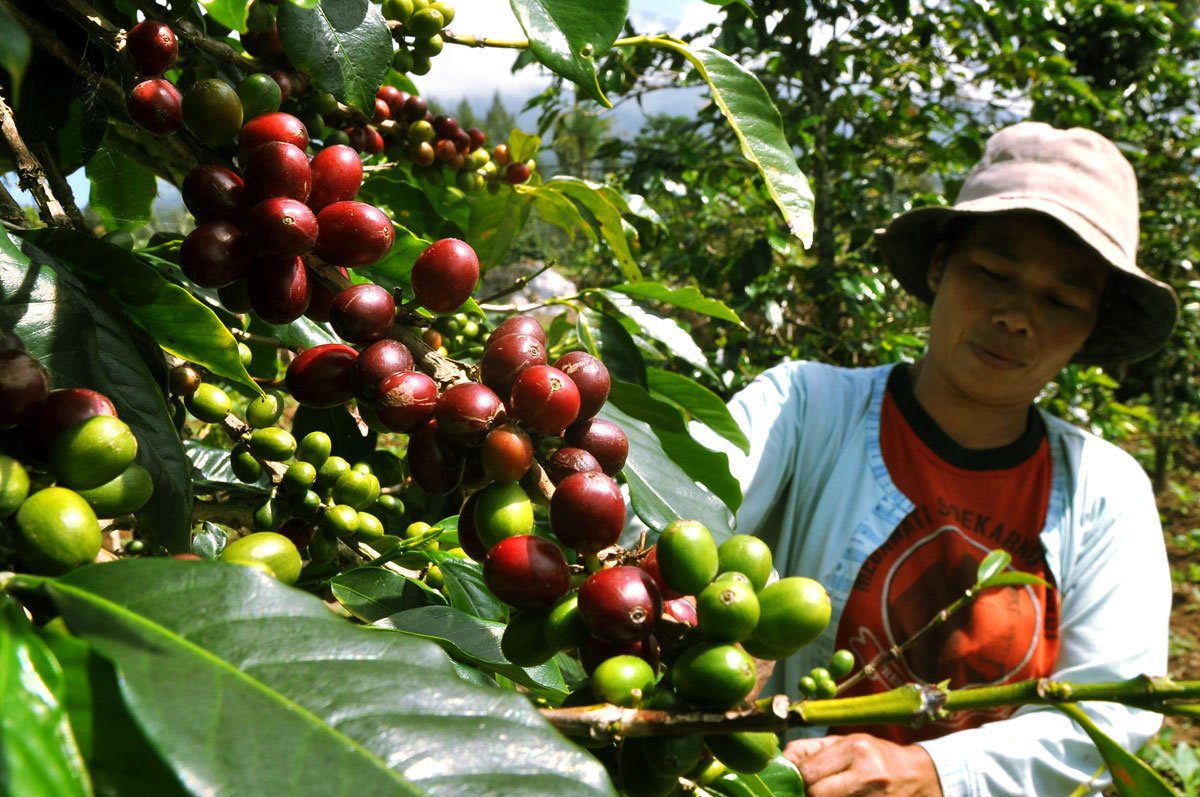 Rwanda is known for exporting some of the finest tea and coffee in Africa. In fact, tea is the leading export of the country while the quality of the coffee has won many international awards.
Rwanda is known for exporting some of the finest tea and coffee in Africa. In fact, tea is the leading export of the country while the quality of the coffee has won many international awards.
Coffee and tea farming is aided in part by the fertile volcanic soils, high altitude and good weather in the country. Coffee and Tea plantation tours can be organized for tourists who are interested in learning about how the two cash crops are grown/processed.
The tours involve observing how the workers plant the crop, pick, select, wash, dry and turn them into final products ready for consumption. Every tour should end with tasting locally prepared coffee- also known as African tea (Coffee or tea mixed with milk and other flavors). Contact Pfunda tea plantation if you are interested in one of their tours.
Musanze Caves:
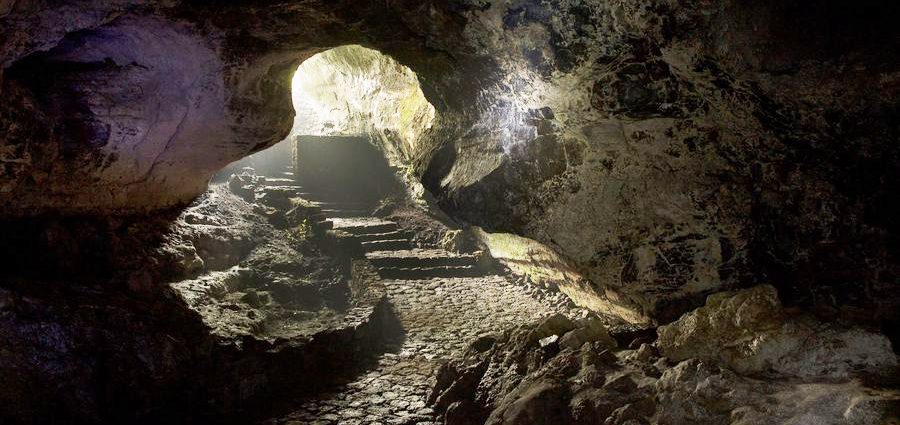 Outside of Volcanoes National Park, in the Musanze area, are these historic caverns. After undergoing renovation, which included constructing staircases and paved trails/paths, the caves were finally made accessible to tourists in 2013.
Outside of Volcanoes National Park, in the Musanze area, are these historic caverns. After undergoing renovation, which included constructing staircases and paved trails/paths, the caves were finally made accessible to tourists in 2013.
The East African Rift Valley was built around 60 million years ago, around the same time as the 2 km-long Musanze caverns, which were formed from lava flows. The main entrance is about 10 kilometers broad and there are approximately 32 entrances. Geology and adventure enthusiasts both like visiting the Musanze caverns. The Batwa pygmies and other local tribal groups used to hide out in the bat-filled caverns.
Hiking Mount Karisimbi:
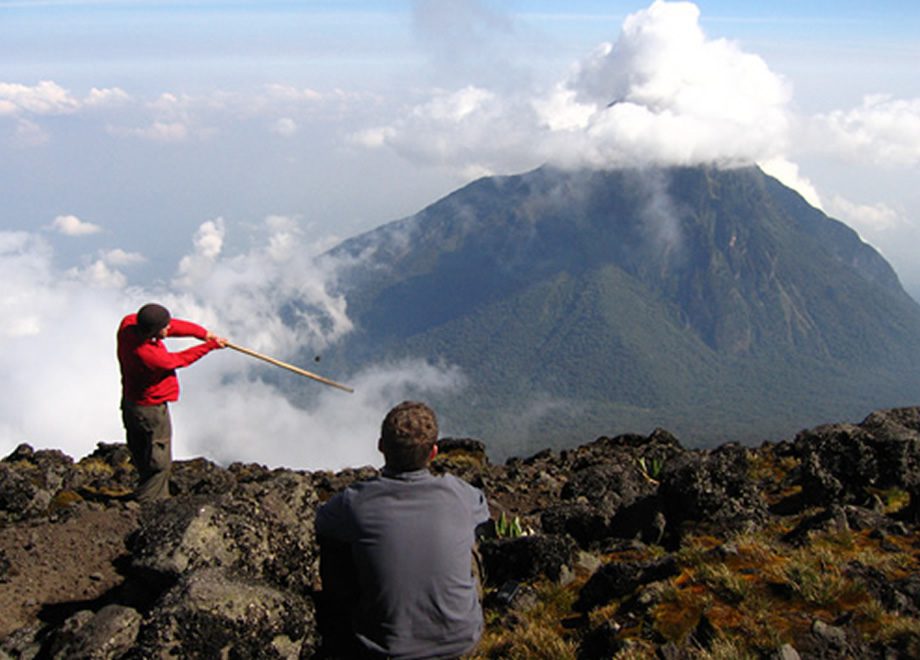 One of the tallest mountains in Africa, Mount Karisimbi rises to a height of nearly 4,500 meters. One of the eight volcanoes in the larger Virunga mountains in Congo, Rwanda, and Uganda, the peak is located in the Volcanoes National Park. Mount Karisimbi requires two days to hike.
One of the tallest mountains in Africa, Mount Karisimbi rises to a height of nearly 4,500 meters. One of the eight volcanoes in the larger Virunga mountains in Congo, Rwanda, and Uganda, the peak is located in the Volcanoes National Park. Mount Karisimbi requires two days to hike.
Despite being difficult, the hike offers spectacular views of the Virunga mountain ranges, the lava-emitting Nyiragongo volcano, and national parks in Uganda and the Democratic Republic of the Congo. In the Volcanoes National Park, climbing Mount Karisimbi is frequently combined with tracking golden monkeys and gorillas.
Climbing Mount Bisoke:
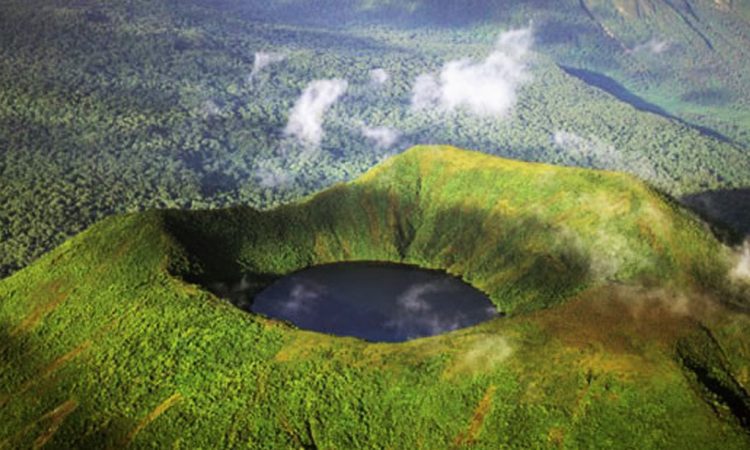 Although Mount Bisoke is the tallest volcano in Rwanda, it only rises 3,711 meters. Its easy walk makes it the most well-known of all the volcanoes. The journey to the summit and return takes just one day.
Although Mount Bisoke is the tallest volcano in Rwanda, it only rises 3,711 meters. Its easy walk makes it the most well-known of all the volcanoes. The journey to the summit and return takes just one day.
Hikers are rewarded after reaching the top with the chance to explore a sizable crater and enjoy views of the other Virunga volcanoes and the volcanoes National Park. As you ascend the lower slopes of the mountain, if you’re fortunate, you might come across a gorilla or a group of golden monkeys.
Despite being Rwanda’s tallest volcano, Mount Bisoke only rises 3,711 meters. The easiest to access of all the volcanoes, it is the most well-known. It only takes one day to travel to the summit and back. At the summit, hikers are rewarded with the opportunity to explore a huge crater and take in views of the volcanoes National Park and other Virunga volcanoes. If you’re lucky, a gorilla or a troop of golden monkeys may be present as you climb the mountain’s lower slopes.
The Congo Nile Trail: The Rwandan government has just included the Congo Nile route as part of its effort to diversify its tourist destinations. There are several ways to travel the 140-mile Congo Nile trail, including on foot, a motorcycle, or a bicycle. It might take ten days to complete the trail if one were to walk.
One of the top riding routes in East Africa is the Congo Nile Trail. The route rewards cyclists with breathtaking views and everything that the Rwandan countryside has to offer, including the lake Kivu, Nyungwe National Park, and lovely rolling hills and tea plantations. After finishing the trek, one would have a better knowledge of how the locals live their life.
Relaxation along the shores of Lake Kivu:
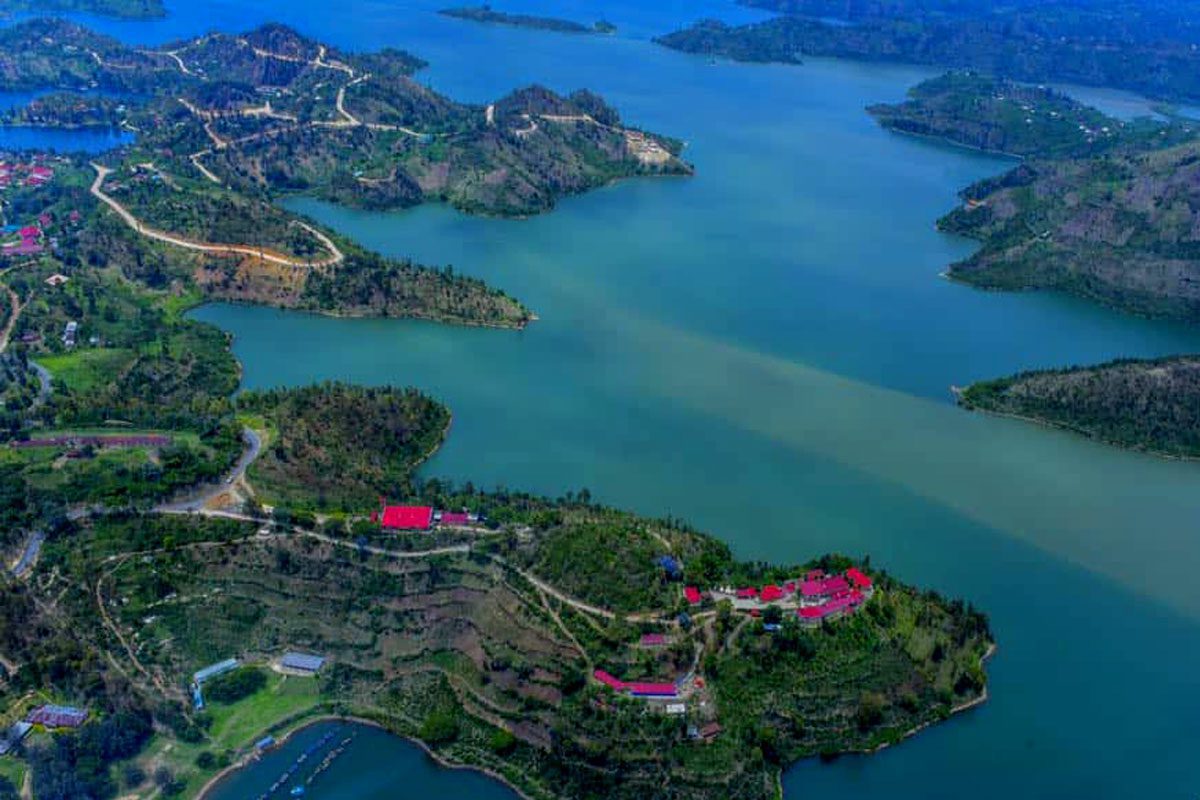 The largest body of water in Rwanda is Lake Kivu, which has a surface area of more than 2,700 square kilometers. It extends all the way to the Democratic Republic of the Congo and is the sixth-largest lake in Africa. Because of the lake’s picturesque shorelines, resorts, and islands, visitors enjoy exploring it. Swimming, birdwatching, canoeing, kayaking, water skiing, windsurfing, paddle boarding, and other water sports are all highly recommended at Lake Kivu.
The largest body of water in Rwanda is Lake Kivu, which has a surface area of more than 2,700 square kilometers. It extends all the way to the Democratic Republic of the Congo and is the sixth-largest lake in Africa. Because of the lake’s picturesque shorelines, resorts, and islands, visitors enjoy exploring it. Swimming, birdwatching, canoeing, kayaking, water skiing, windsurfing, paddle boarding, and other water sports are all highly recommended at Lake Kivu.
Bikers now have the opportunity to explore Rwanda’s countryside on foot or on a mountain bike thanks to the construction of the Congo Nile path along the lake’s beaches. In Lake Kivu, there are no crocodiles or hippos.
The National Museum of Rwanda:
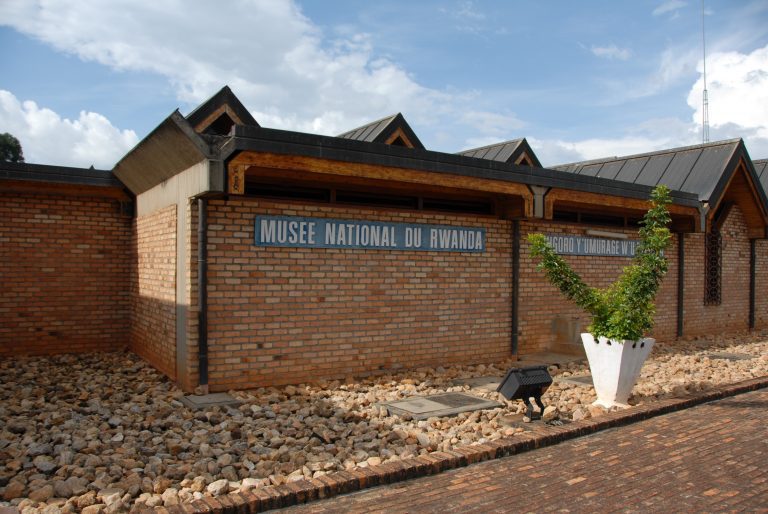 The complex, which is now known as the Ethnographic Museum, was constructed in 1989 and is located in Butare, a town 80 kilometers from Kigali, the country’s capital. It is a popular destination for visitors to Nyungwe Forest National Park. Opportunities to learn about Banyarwanda culture are provided through the Museum.
The complex, which is now known as the Ethnographic Museum, was constructed in 1989 and is located in Butare, a town 80 kilometers from Kigali, the country’s capital. It is a popular destination for visitors to Nyungwe Forest National Park. Opportunities to learn about Banyarwanda culture are provided through the Museum.
The museum’s seven galleries display images, cultural objects, and antiquity (pottery, instruments, traditional garb, woodwork). You can watch Intore dancers entertain visitors after looking through the gallery.
Nyamata Church: If you want to learn more about what transpired before, during and after the genocide in Rwanda, you must visit this church. About 10,000 Tutsi’s sought shelter in the church hoping that they would be safe but where all killed by the merciless Interahamwe.
The Hutu extremists used grenades to open the church doors and killed all who were inside. Visitors to the site can still see human bones, bloodstained clothes and bullet holes in the church. About 50,000 people were buried in a mass grave outside the church.
Lakes Burera and Ruhondo: These beautiful twin lakes are found around the Volcanoes National Park. Most tourists visit the lake in the afternoon/evening hours and after completing activities within the park – like gorilla trekking. The lush landscape is home to birds and an amazing plant collection.
One can go for nature walks, canoeing, birding, camping or visiting the local fishermen. Honeymooners and couples will find the beautiful scenery very calming and refreshing especially after completing tiring activities at the Volcanoes National Park.
Nyamirambo Women’s Center: This non-profit center is found in Nyamirambo district (part of Kigali). It was founded to train women so that they can create their own jobs or become gainfully employed. The women at the center are taught how to create quality clothing using local fabrics.
The women also produce home decoration items, beautiful beads and other souvenirs. The Nyamirambo Women’s Center also organizes walking tours around the neighborhood for tourists who want to learn more about the kind of life lived by the local people. When you visit this center, ensure that you purchase something to support the women.
Gorilla Guardians Village: Formerly Known as the Ibyiwacu Cultural Village, the Centre was founded by Edwin Sabuhoro (a former warden at the Volcanoes National Park) to showcase all that is great about the Kinyarwanda Culture while also providing employment for ex-poachers. Visitors are first taken for a tour of the Centre before settling down to watch cultural dances. While at the Gorilla Guardians village, visitors can also learn how to prepare local food or hunt like the Batwa people. You may be invited to wear traditional royal clothes and experience what it was like to be a cultural leader.
Mamba Club in Kigali: Are you trying to decide where to spend the evening in Kigali? The Mamba Club is a well-liked hangout for middle- and upper-class Kigalians looking for a good night out. They coordinate a variety of leisure activities, including swimming, football, volleyball, pool, and ping-pong. The lone bowling alley in the city is at the Mamba Club. Visit Mamba Club with your loved ones, coworkers, or friends and have a blast there well into the night. Excellent cuisine and drinks are served at a bar that is well-stocked.

Comments